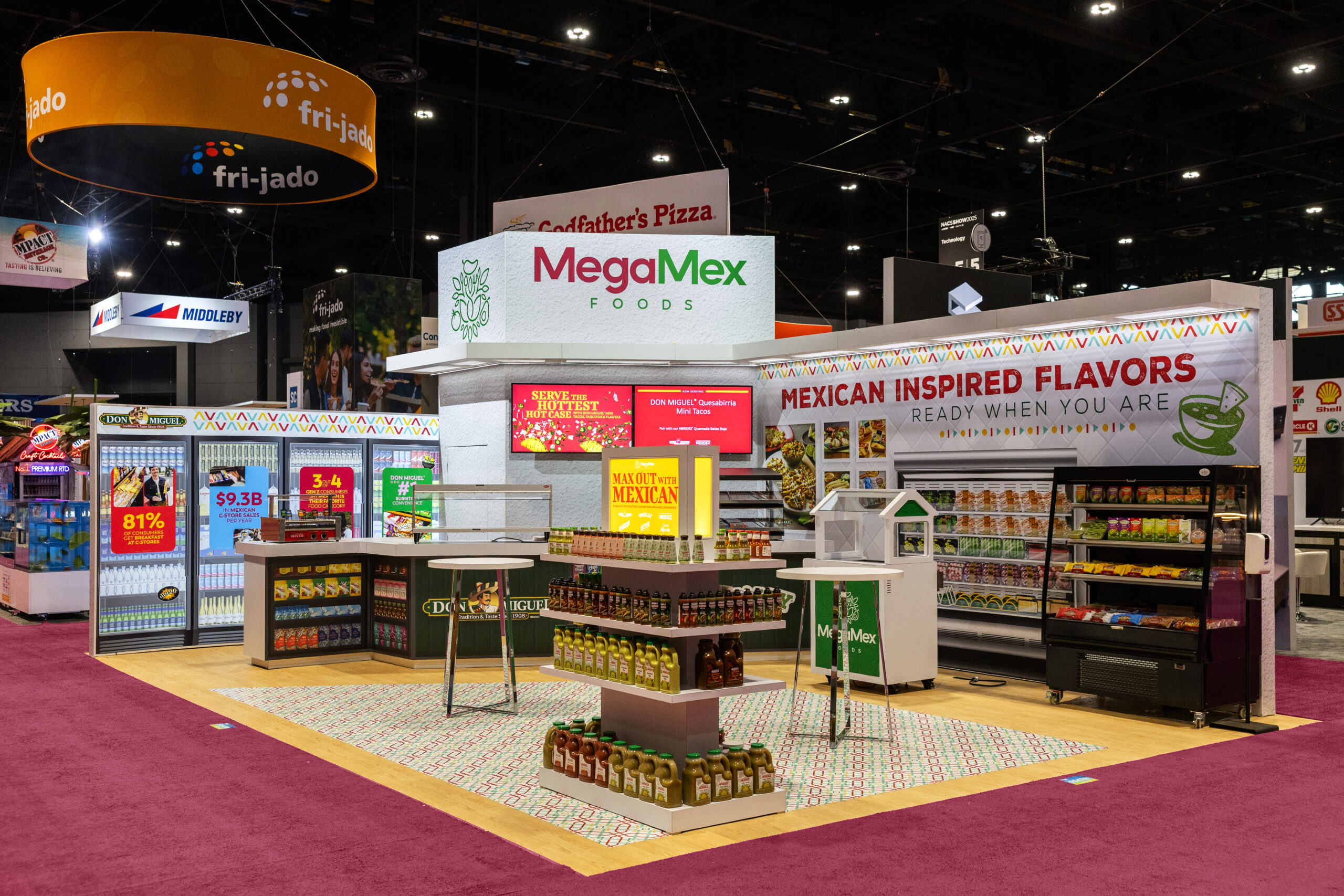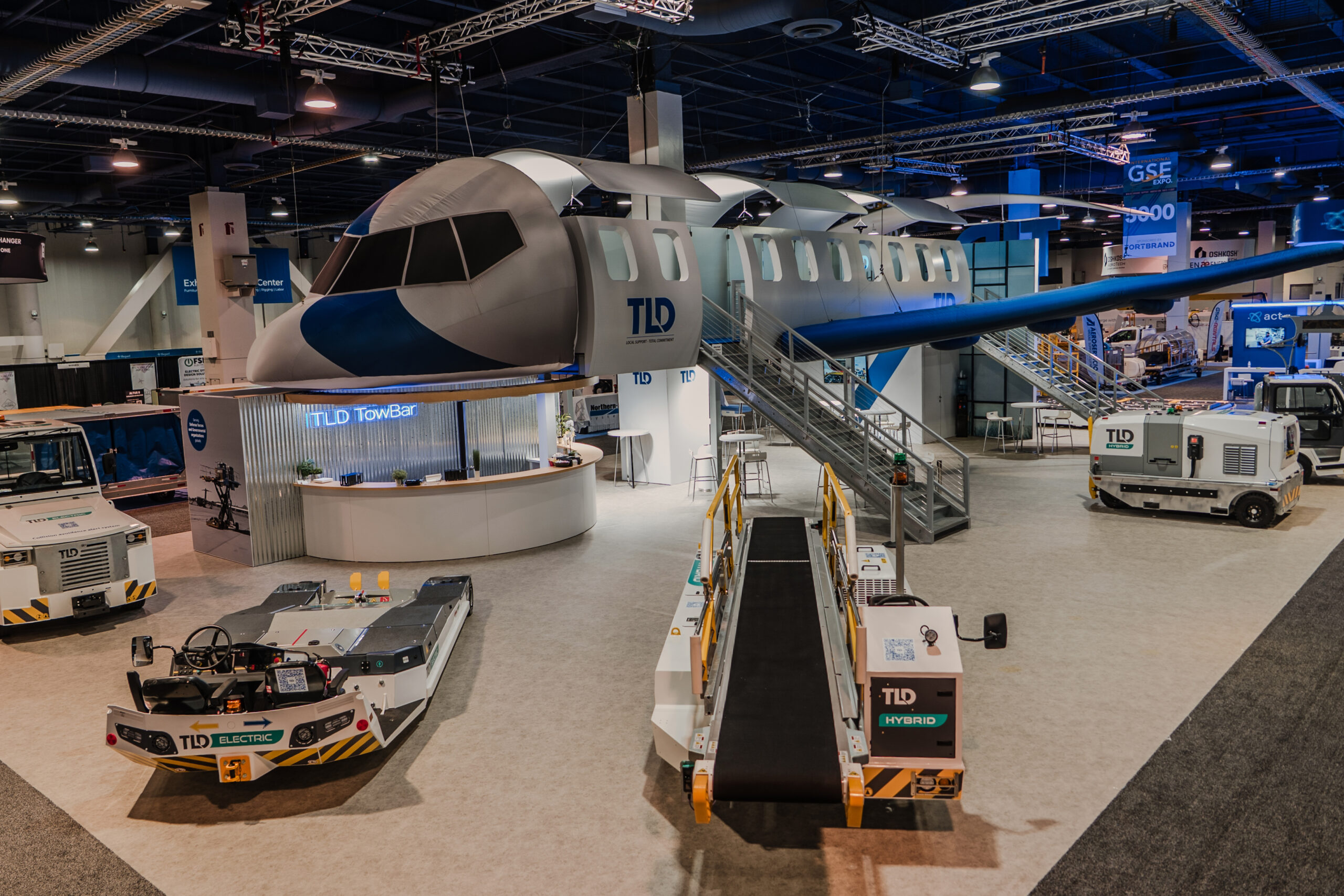CES, NAB, Pack Expo, OTC, AAPEX/SEMA, MAGIC, ASD, and ConExpo/ConAGG represent some of the largest trade shows in the U.S. These events fill entire convention centers and overflow into massive tents. Giants dominate floor space with immersive displays, but mid-sized exhibitors can still stand out. If you’ve invested in a 20’x20’ island exhibit, the challenge is ensuring attendees not only notice you but seek you out.

Why Pre-Planning and Pre-Marketing Are Essential
Exhibiting is more than renting structure. Success depends on:
Lead qualification and follow-up
Pre-show marketing and invitations
Scheduled client and prospect meetings
Demonstrations and giveaways
Without these, you risk attendees saying, “Oh, you were there? How did I miss you?” The fix is clear: make your exhibit a must-see before the show floor opens. According to CEIR, 96% of exhibitors use engagement tactics such as pre-show outreach to achieve objectives like lead generation, branding, and relationship management. More than half rate these tactics as highly effective, proving that pre-planning directly shapes ROI.
Pre-Show Tactics to Use
- Send free customer invitations and personalized postcards
- Share previews of booth activities on your website and social media
- Have sales reps personally call clients to schedule visits
- Announce special demos or promotions in advance
Design an Exhibit That Gets Noticed
An island exhibit should communicate a simple, clear theme. Use graphics that can be read from across the hall. Choose bold colors and lighting that differentiate you from neighboring booths. Muted designs vanish next to competitors using strong visuals.
Enhance your space with:
- Lighting: Backlit images and spotlights make products pop
- Movement: Rotating displays or working product models draw attention
- Technology: Looping videos or live presentations create buzz
Avoid barriers. Counters and tables at the aisle can discourage engagement. Keep the front open and inviting.
Demonstrations That Engage Attendees
Demonstrations are a proven way to stop traffic and convert interest into leads. To be effective:
- Play to the entire room, not just the front row
- Make eye contact, shake hands, and read name tags to personalize the experience
- Use qualifying questions so staff can focus on the most valuable prospects
- Invite attendees on stage to try products themselves
- Incorporate interactive tools like electronic voting or instant audience feedback
These techniques humanize your brand and help prospects self-identify, saving your team time and increasing quality conversations.
Boost Traffic With Marketing Extras
- Under-the-Door Flyers: With show management approval, distribute flyers at official hotels highlighting booth specials or giveaways.
- Giveaways: Choose quality items tied to your theme. Avoid cheap trinkets that hurt perception. If you run a raffle, use targeted lead cards with meaningful questions instead of collecting unqualified lists.
- Onsite Buzz: Encourage photos, hashtags, and social shares to extend reach beyond the booth.
When handled correctly, promotions build traffic, spark conversations, and create lasting impressions. Done poorly, they drain budgets and damage reputations.
The Measurable Value of Trade Shows
Research from CEIR shows why exhibiting remains one of the most effective B2B channels:
- 96% of exhibitors deploy engagement tactics to meet goals like lead generation and branding.
- Over 50% rate engagement as highly effective across 15+ performance metrics.
- 81% of exhibitors evaluate outcomes, using real-time monitoring and post-show evaluations【iaee.com】.
These findings underscore the importance of planning, engagement, and measurement. A larger booth alone is not enough—you must pair it with strategies that capture and sustain attention.
Follow Up and Close the Loop
Post-show follow-up is often overlooked but critical. Attendees expect outreach if they’ve expressed interest. Failure to follow up frustrates prospects and erodes ROI. A structured process—personalized thank-you emails, timely calls, and content tailored to the conversation—converts interest into revenue.
For companies making the leap to a larger island booth, strong follow-up often justifies the investment and leads to growth. Some even find they need more space the following year. Firms such as Absolute Exhibits, a full-service exhibit house, guide clients through this process to ensure booth investments translate into measurable results.
Checklist: How to Stand Out at Big Trade Shows
Follow up promptly with every interested attendee
Define a bold booth theme with clear graphics
Use lighting, movement, and interactive tech to attract visitors
Launch pre-show marketing campaigns with personal invitations
Deliver audience-centered product demonstrations
Distribute flyers and run quality giveaways tied to brand messaging
Collect qualified leads through targeted questions
Measure engagement and evaluate outcomes



